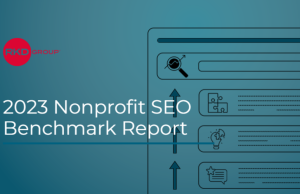The nonprofit sector could be losing out on almost $100 million in donations through email appeals because of spam, or an average of almost $21,000 for a charity, according to an annual study of email.
The EveryAction 2019 Email Deliverability Benchmarks Study estimated that the average email spam rate for nonprofits fell to 20.18 percent last year, from a high of 24.16 percent in 2017. Although it was down from the previous year’s peak, the average spam rate was still well above the 7.03 percent reported in 2015.
Spam could be costing the average nonprofit almost $21,000 in revenue each year, or more than $1,000 for every percentage point of email that went to spam.
The $20,833.88 lost to spam is based on three hypotheticals around a 100,000-subscriber email list that sends two emails per month. An average spam rate of 20.18 percent would yield $82,604.12, compared with $102,453.12 based on a spam rate of 1 percent. In an ideal world for nonprofits, a 100 percent deliverability rate would raise $103,488.
Of the estimated $410 billion in U.S. giving reported in the 2018 edition of Giving USA, about 8.5 percent was classified as “online revenue,” and 13 percent of that portion originated from email appeals. Assuming the average spam rate of 20.18 percent, the EveryAction study estimated that nonprofits potentially lost out on some $92.8 million due to spam filters and low deliverability.
The Washington, D.C.-based constituent relations marketing (CRM) firm analyzed deliverability data for 55 national nonprofits against industry benchmarks as part of its annual study. The trend was similar to 2017, with the highest spam rate in March (24.21 percent) and the lowest (15.2 percent) in July.
Nonprofits sent about 30 fundraising emails per month in 2018, up from the previous year’s average of 21, reaching a high of almost 45 emails during December 2018. Spam rates in 2018 were less than 2017 throughout the year until August, when they were similar and finally surpassed the previous year’s rate in October through December.
Email service providers (ESP) constantly update their algorithms to better filter content and ensure relevant emails get to their users. Google’s Gmail has focused more on what the report described as “gray mail,” email that falls between wanted and spam.
“This is a natural next step for email filters, which are already sophisticated enough to block almost all of the obvious spam emails. Political and nonprofit email often falls into this gray area, especially if a nonprofit or campaign has engaged in non-recommended practices such as list trades, appends, using an opt-in,” according to the deliverability study.
EveryAction officials suggest focusing on sending email to users who have opened or clicked within the last six months or less and continue sending to that universe until open rates get back over 20 percent. Expand the universe by adding another group of less engaged email addresses, focusing on building engagement, and repeat the process for each email domain. “It takes time to fix but will be worth the effort in increased fundraising from better deliverability,” according to the study.
EveryAction listed several other “best practices,” including:
- Opt-in and confirm
- Segment and provide personalized content
- Focus on bounces and inactives
- Automate email series to provide timely communication
- Check your HTML
- Choose the best provider









